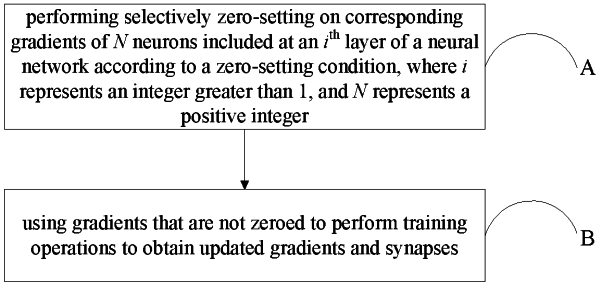| CPC G06N 3/08 (2013.01) [G06N 3/047 (2023.01); G06N 3/084 (2013.01)] | 16 Claims |

|
1. A sparse training method comprising:
selectively zeroing one or more gradients corresponding to one or more neurons included in a layer of a neural network according to a zero-setting condition;
performing training operations by using one or more non-zeroed gradients to obtain updated gradients and synapses; and
screening the one or more neurons included in the layer randomly prior to zeroing corresponding gradients of selected neurons according to the zero-setting condition,
wherein the zero-setting condition is a zero-setting probability condition, wherein the zero-setting probability is p, N*p neurons are selected randomly, and corresponding gradients of the N*p neurons are set to zero.
|